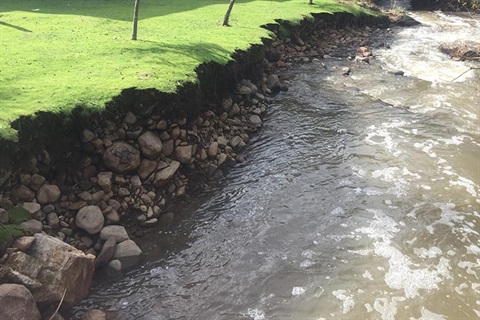Storm surge and flood prone land

Hobart is located in the relatively short distance between Kunanyi / Mt Wellington and the Derwent Estuary. This means that there a large number of watercourses running through the city.
The steep slopes of Kunanyi / Mt Wellington and the high rainfall nature of Tasmania means that there can be a considerable amount of water moving very quickly down Hobart's watercourses.
The urban layout of Hobart has resulted in many residences being built close to both piped and open watercourses and the coast. In these locations they could potentially be impacted by flooding or storm surge.
We have modelled storm surge and flood prone areas in Hobart, to identify areas at risk of flooding. This information shows us what is likely to happen in an extreme storm event.
If you are considering developing on land close to any watercourse (either piped or open) it is important to understand what may happen in the future.
The land that is considered at risk of storm surge is all land below 3 metres on the Australian Height Datum (Tasmania AHD83), where 0 is Tasmania's approximate sea level in 1972.
For more information about potential inundation risk areas, and a link to the updated flood maps, visit our flood risk and maps page.
The indicative plans show the approximate 3 metre datum, and land that may be at risk of flooding in a 1 per cent annual exceedance probability (AEP) event. Should you be considering developing in a flood or storm surge prone area, further site specific modelling may be required to determine the actual risk to the property.
The maximum 1 per cent Annual Exceedance Probability (AEP) for the year 2100 storm surge is 1.943 metres above AHD83 in the Hobart Region. A 1 metre freeboard is then added to account for wind and ocean swell generated waves. This totals 2.934 metres, rounded up to 3 metres.
Please note: AEP means the likelihood of a flood of a particular size (or larger) in any one year, usually expressed as a percentage. For example, if a peak flood discharge of 100 cubic metres per second has an AEP of 1 per cent, there is a 1 per cent chance (approximately equivalent to an average recurrence interval of 100 years) of a peak flood discharge of 100 cubic metres per second or larger occurring in any one year. However, the AEP of a flood event gives no indication when a flood of that size will occur next.